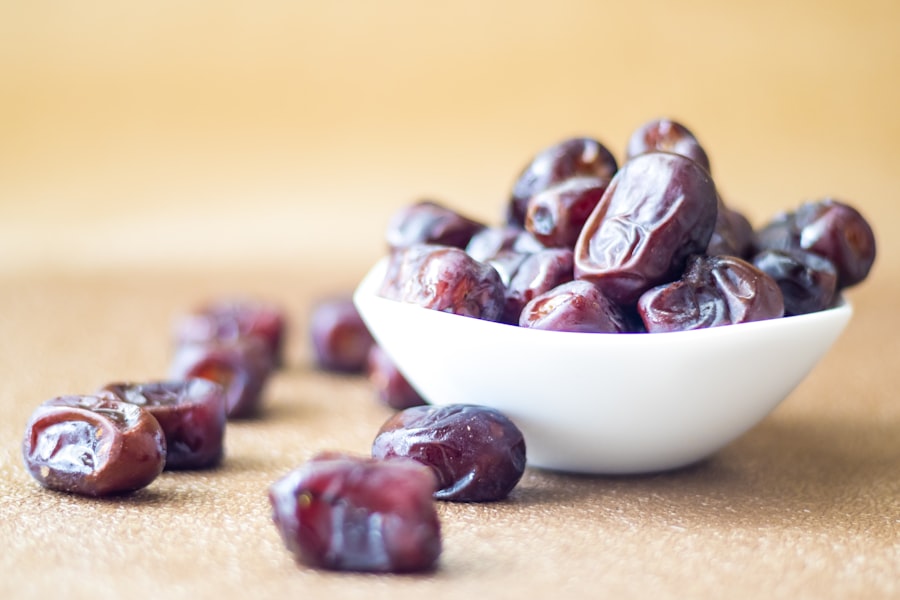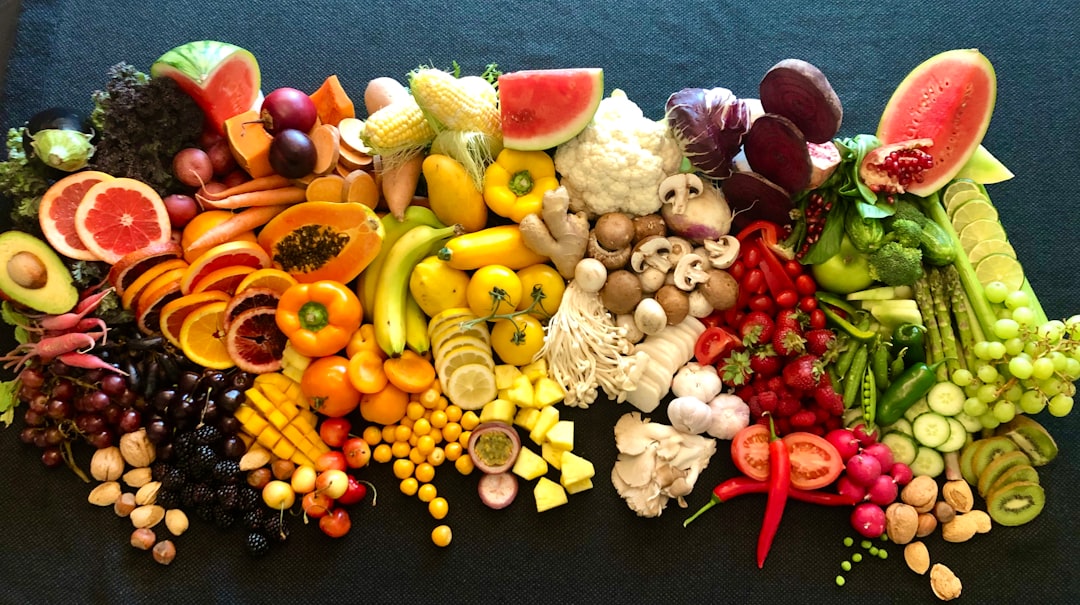As you age, the importance of dietary fiber becomes increasingly evident. Fiber plays a crucial role in maintaining overall health, particularly for seniors. It is not just a matter of digestion; fiber contributes to various bodily functions that can significantly enhance your quality of life.
For instance, it helps regulate bowel movements, preventing constipation, which is a common issue among older adults. By incorporating adequate fiber into your diet, you can promote a healthy digestive system, which is essential for nutrient absorption and overall well-being. Moreover, fiber is known to have a positive impact on heart health.
As you grow older, the risk of cardiovascular diseases increases, making it vital to adopt dietary habits that support heart function. Fiber helps lower cholesterol levels and maintain healthy blood pressure, reducing the risk of heart disease. By prioritizing fiber in your meals, you are not only addressing digestive health but also taking proactive steps toward protecting your heart as you age.
Key Takeaways
- Dietary fiber is important for seniors as it aids in digestion, prevents constipation, and helps maintain a healthy weight.
- Seniors need around 21-30 grams of fiber per day, but many struggle to meet this target due to various challenges.
- Meeting the recommended fiber intake can help seniors lower their risk of heart disease, stroke, and type 2 diabetes.
- Common challenges in meeting fiber targets for seniors include dental issues, decreased appetite, and limited access to fiber-rich foods.
- Good sources of fiber for seniors include fruits, vegetables, whole grains, legumes, and nuts.
How Much Fiber Do Seniors Need?
Understanding how much fiber you need is essential for reaping its benefits. The general recommendation for adults is about 25 grams per day for women and 38 grams for men. However, as a senior, your needs may vary based on factors such as activity level and overall health.
The Institute of Medicine suggests that older adults should aim for at least 21 grams of fiber daily for women and 30 grams for men. This adjustment accounts for changes in metabolism and dietary habits that often occur with age. To meet these recommendations, it’s important to focus on both soluble and insoluble fiber.
Soluble fiber, found in foods like oats and beans, helps lower cholesterol and stabilize blood sugar levels. Insoluble fiber, present in whole grains and vegetables, aids in digestion and promotes regularity. By ensuring a balanced intake of both types of fiber, you can better support your body’s needs as you navigate the later stages of life.
Benefits of Meeting the Recommended Fiber Intake

Meeting the recommended fiber intake can lead to numerous health benefits that are particularly advantageous for seniors. One of the most significant advantages is improved digestive health. Adequate fiber intake helps prevent constipation and promotes regular bowel movements, which can be a common concern as you age.
A well-functioning digestive system not only enhances comfort but also ensures that your body effectively absorbs essential nutrients from the foods you consume. In addition to digestive benefits, meeting your fiber goals can also contribute to weight management. High-fiber foods tend to be more filling, which can help curb overeating and reduce the risk of obesity—a growing concern among older adults.
By incorporating more fiber into your diet, you may find it easier to maintain a healthy weight, which is crucial for reducing the risk of chronic diseases such as diabetes and heart disease.
Common Challenges in Meeting Fiber Targets for Seniors
| Challenges | Description |
|---|---|
| Access to Infrastructure | Lack of fiber optic infrastructure in certain areas, making it difficult to provide high-speed internet to seniors. |
| Cost of Implementation | High cost of implementing fiber optic networks in senior living facilities or communities. |
| Digital Literacy | Low digital literacy among seniors, leading to challenges in adopting and utilizing fiber-based technologies. |
| Physical Limitations | Physical limitations of seniors may hinder their ability to access and utilize fiber-based internet services. |
| Privacy and Security Concerns | Seniors may have concerns about privacy and security when using fiber-based internet, leading to reluctance in adoption. |
Despite the clear benefits of dietary fiber, many seniors face challenges in meeting their daily targets. One common issue is a lack of awareness about high-fiber foods and how to incorporate them into meals. Many older adults may have grown up in an era when processed foods were more prevalent, leading to a diet low in natural fibers.
This lack of familiarity can make it difficult to transition to a fiber-rich diet. Another challenge is the physical aspect of consuming fiber-rich foods. Some seniors may experience dental issues or difficulty chewing, making it harder to enjoy whole grains, fruits, and vegetables that are high in fiber.
Additionally, digestive changes that occur with age can lead to discomfort when increasing fiber intake too quickly.
Sources of Fiber for Seniors
To successfully increase your fiber intake, it’s important to know where to find it. Whole grains are an excellent source of dietary fiber; options like brown rice, quinoa, and whole wheat bread can easily be incorporated into your meals. Additionally, legumes such as lentils, chickpeas, and black beans are not only high in fiber but also provide protein and other essential nutrients.
Fruits and vegetables are also vital components of a high-fiber diet. Berries, apples with skin, pears, carrots, and broccoli are all rich in fiber and can be enjoyed in various ways—raw, cooked, or blended into smoothies. Nuts and seeds are another great source; they add crunch to salads or can be enjoyed as snacks while providing healthy fats along with fiber.
Tips for Increasing Fiber Intake in Seniors

Increasing your fiber intake doesn’t have to be overwhelming; there are simple strategies you can implement to make it easier. Start by gradually adding high-fiber foods to your meals rather than making drastic changes all at once. This approach allows your digestive system to adjust without causing discomfort.
For instance, if you typically eat white bread, consider switching to whole grain bread or mixing whole grain pasta with regular pasta. Another effective tip is to incorporate fruits and vegetables into every meal. You might add berries to your breakfast cereal or include a side salad with lunch and dinner.
Snacking on raw vegetables or fruits can also help boost your daily fiber intake while providing essential vitamins and minerals. Additionally, consider keeping a food diary to track your fiber consumption; this can help you identify areas where you can improve.
Potential Risks of Excessive Fiber Intake for Seniors
While dietary fiber is essential for health, it’s important to be aware of the potential risks associated with excessive intake. Consuming too much fiber too quickly can lead to gastrointestinal issues such as bloating, gas, and cramping. For seniors with sensitive digestive systems or pre-existing conditions like irritable bowel syndrome (IBS), these symptoms can be particularly uncomfortable.
Moreover, excessive fiber intake can interfere with the absorption of certain nutrients. If you consume an extremely high-fiber diet without adequate hydration or balance with other food groups, you may inadvertently hinder your body’s ability to absorb essential vitamins and minerals. It’s crucial to find a balance that allows you to enjoy the benefits of fiber without experiencing adverse effects.
The Role of Fiber in Digestive Health for Seniors
Fiber plays a pivotal role in promoting digestive health among seniors. As you age, your digestive system may become less efficient due to various factors such as hormonal changes or decreased physical activity levels. Incorporating sufficient fiber into your diet can help counteract these changes by promoting regular bowel movements and preventing constipation.
Insoluble fiber is particularly beneficial for digestive health as it adds bulk to stool and helps it pass more easily through the intestines. This type of fiber is found in whole grains, nuts, and many vegetables. On the other hand, soluble fiber helps regulate digestion by forming a gel-like substance in the gut that slows down digestion and aids in nutrient absorption.
By including both types of fiber in your diet, you can support a healthy digestive system well into your senior years.
Fiber and Heart Health for Seniors
Heart health is a significant concern for many seniors, making it essential to adopt dietary habits that support cardiovascular function. Research has shown that a high-fiber diet can help lower cholesterol levels and reduce the risk of heart disease—a leading cause of mortality among older adults. Soluble fiber plays a key role in this process by binding to cholesterol in the digestive system and helping eliminate it from the body.
In addition to lowering cholesterol levels, dietary fiber can also help regulate blood pressure and improve overall heart health. Foods rich in fiber often contain beneficial nutrients such as potassium and magnesium that contribute to cardiovascular wellness. By prioritizing fiber-rich foods in your diet, you are taking proactive steps toward maintaining a healthy heart as you age.
Fiber and Blood Sugar Management for Seniors
Managing blood sugar levels is crucial for seniors, especially those with diabetes or prediabetes. Dietary fiber can play an important role in this regard by slowing down the absorption of sugar into the bloodstream. This gradual release helps prevent spikes in blood sugar levels after meals—a common concern for individuals managing diabetes.
Soluble fiber is particularly effective at stabilizing blood sugar levels due to its ability to form a gel-like substance in the gut that slows digestion. Foods such as oats, beans, and fruits are excellent sources of soluble fiber that can help you maintain balanced blood sugar levels throughout the day. By incorporating these foods into your meals and snacks, you can better manage your blood sugar while enjoying delicious options.
Consulting a Healthcare Professional for Personalized Fiber Recommendations
As you consider increasing your dietary fiber intake, consulting a healthcare professional is always a wise decision. A registered dietitian or nutritionist can provide personalized recommendations based on your individual health needs and dietary preferences. They can help you determine the right amount of fiber for your specific situation while considering any medical conditions or medications that may affect your dietary choices.
Additionally, healthcare professionals can guide you on how to gradually increase your fiber intake without causing discomfort or digestive issues. They may also suggest specific high-fiber foods that align with your tastes and lifestyle preferences. By working with an expert, you can create a sustainable plan that enhances your overall health while ensuring that you meet your nutritional goals effectively.
In conclusion, dietary fiber is an essential component of a healthy diet for seniors. By understanding its importance and how to incorporate it into your meals effectively, you can enjoy numerous health benefits that enhance your quality of life as you age. Whether it’s improving digestive health or supporting heart function, prioritizing fiber will serve you well on your journey toward optimal wellness.
